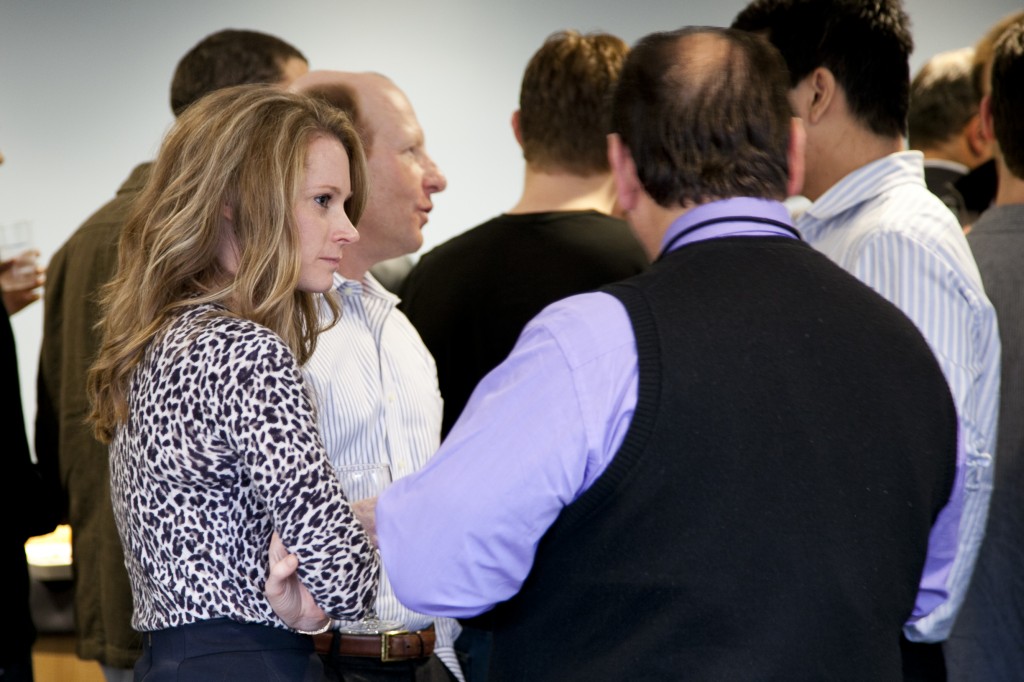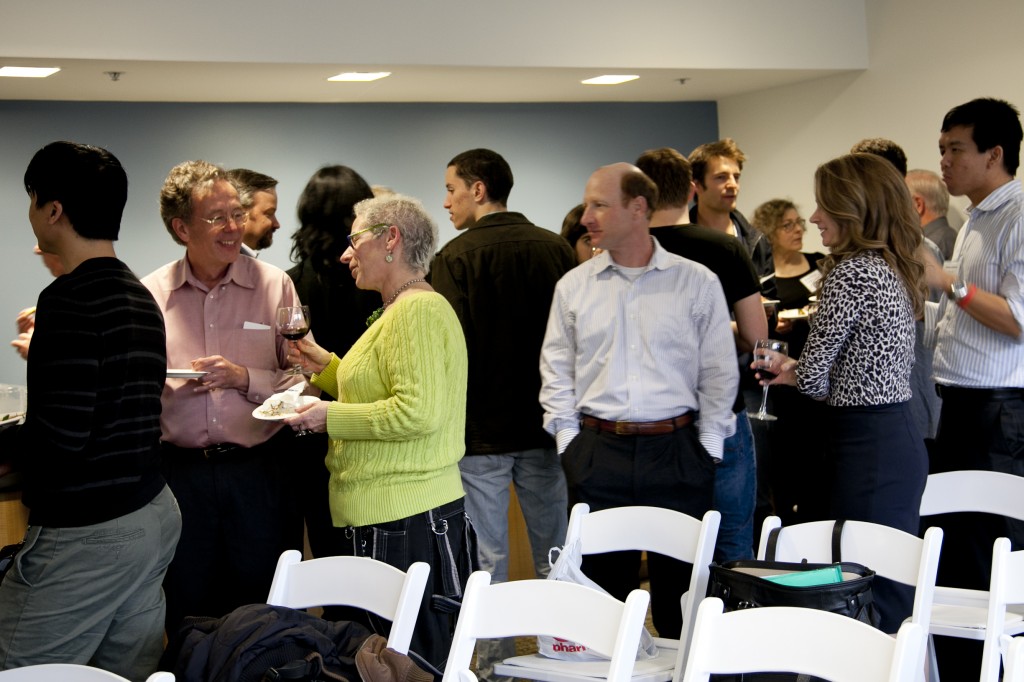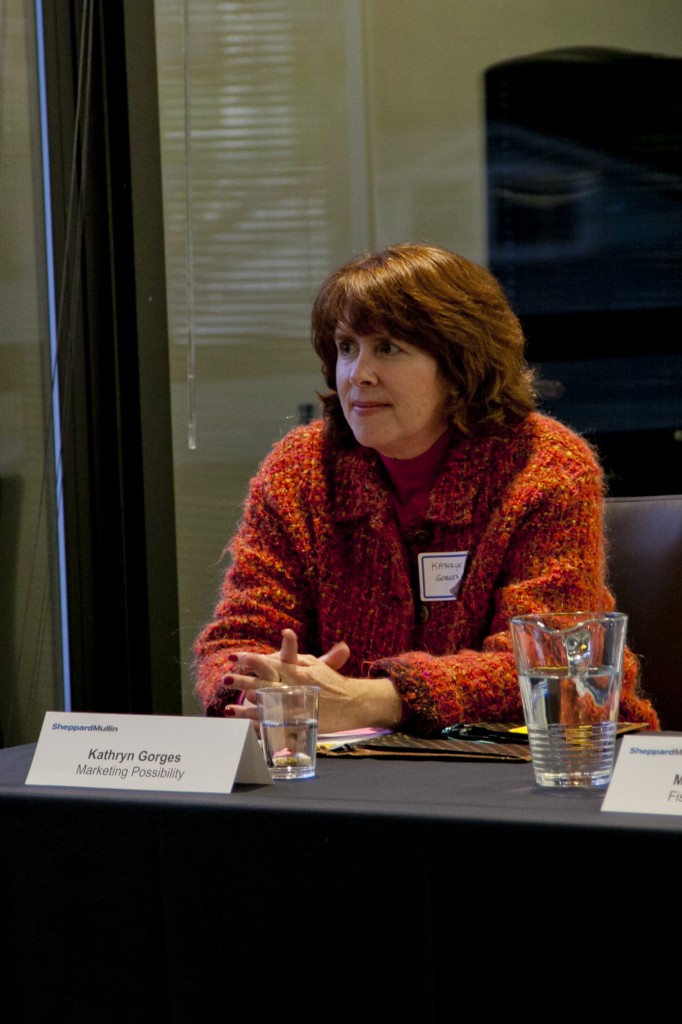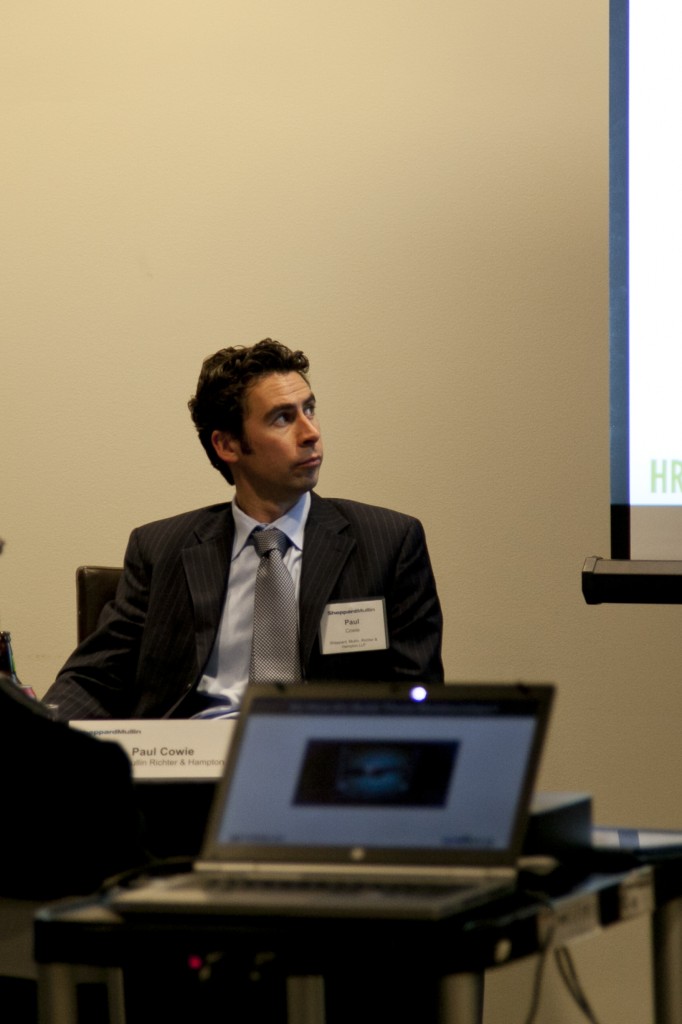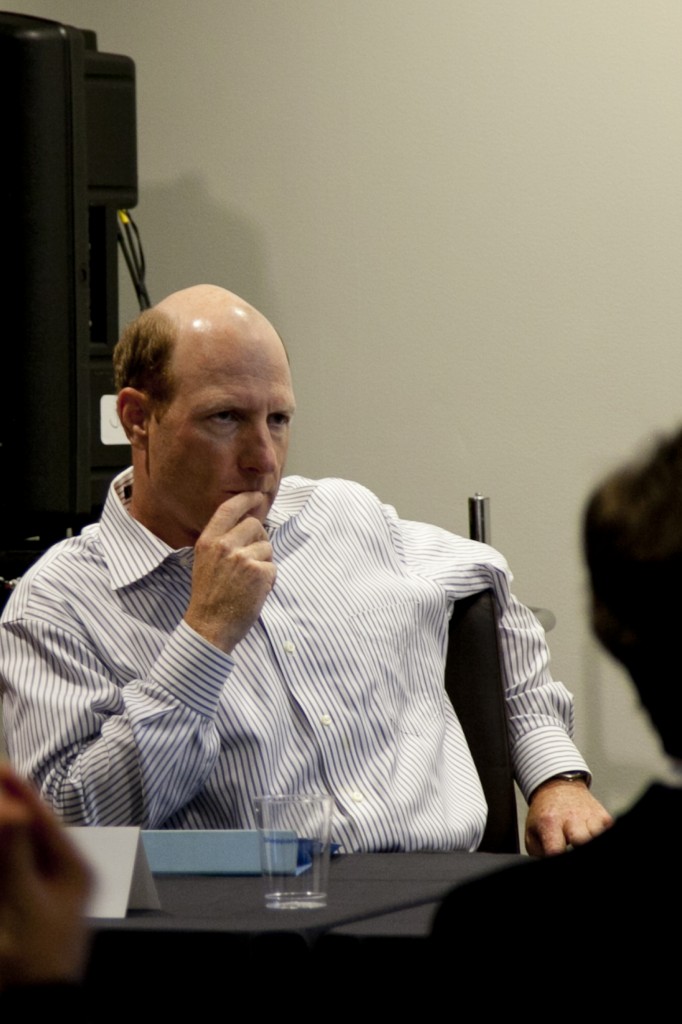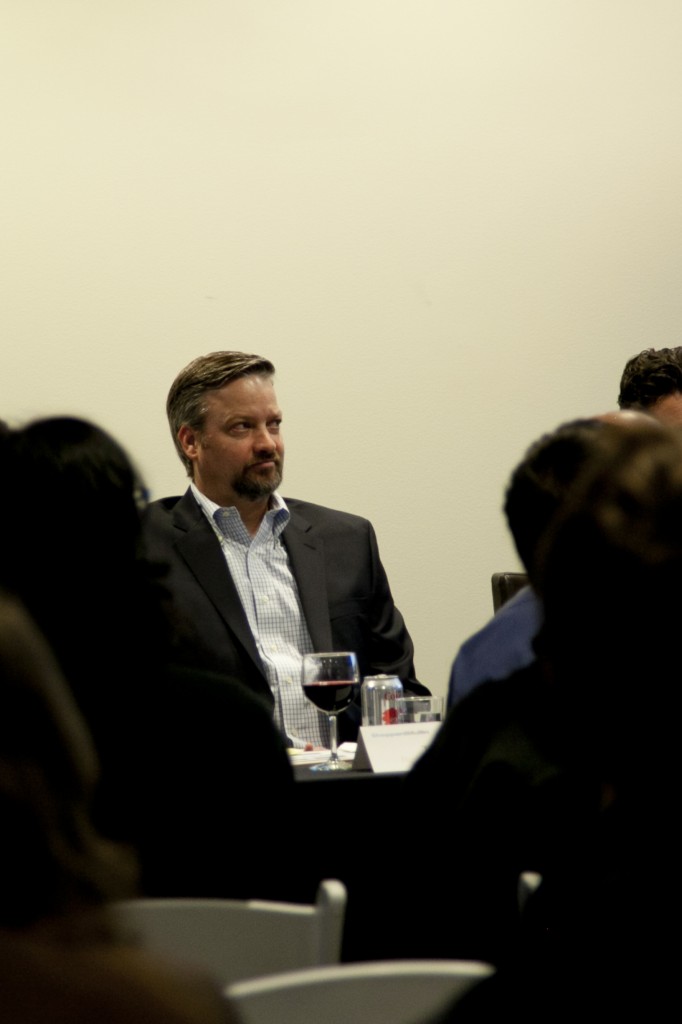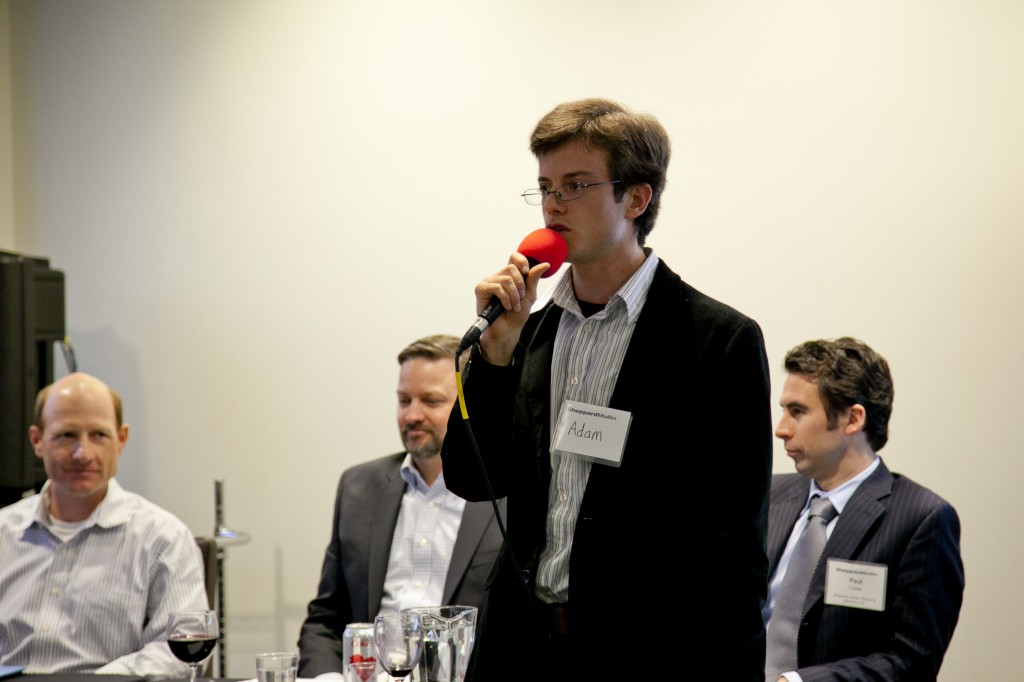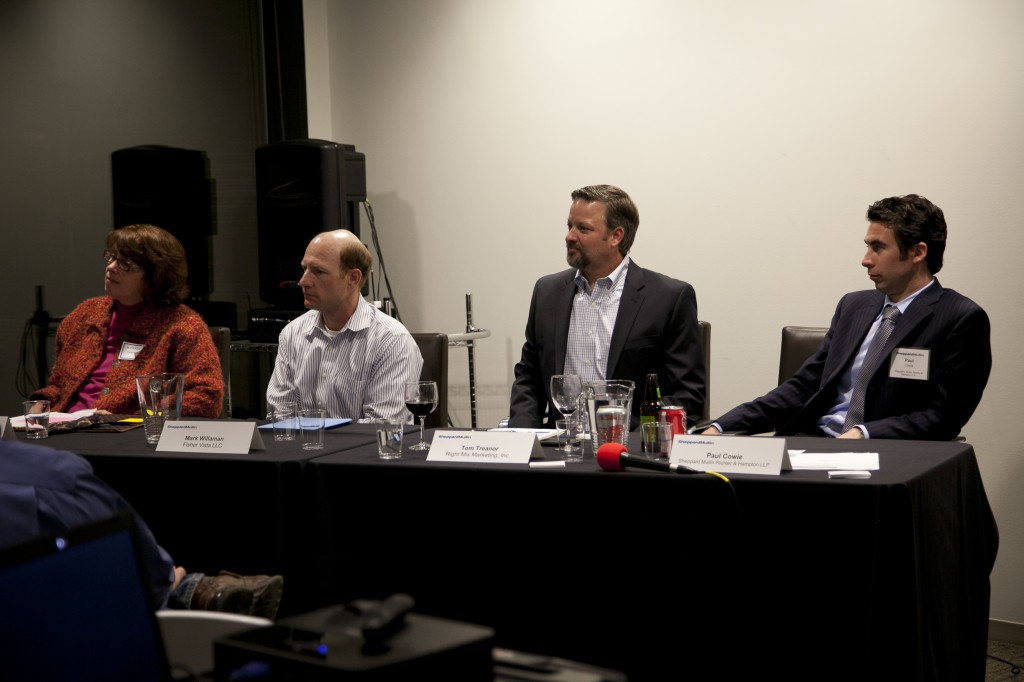On March 20th, the Silicon Valley Innovation Institute (SVII) had a gathering on the topic of “Achieving Intimacy AND Reach Through Social Media,” hosted by the Palo Alto office of Sheppard Mullin Law Associates, where we talked about social media marketing.
It was a vigilant meeting:
That was a joke. But we were definitely treated to some fine fare by our generous hosts at Shepperd Mullin:
The goal was to see if social media allows you to have intimacy and reach at the same time. Traditional marketing and advertising has had great mass-market reach through things like TV, radio, and newspapers, but it hasn’t had the personal connection, therefore losing a lot of the impact. This is the reason that advertising has always been a fairly inefficient medium. With the advent and ubiquity of social media, however, the possibility is out there that advertising can be much more efficient and effective through the use of personalization. While the consensus was that yes, such intimacy (and effectiveness) is possible, there was still some debate over what that actually means or whether that was even a good thing.
There was debate over whether personalized advertising can actually be considered as intimacy. One of the definitions proposed by an audience participant was that a relationship is intimate when people don’t feel the need to emotionally hide themselves. That’s a good discrete definition of intimacy (which can be hard to achieve in social media). However, on a more gradual scale, you could say that a relationship gets more intimate as it gets less formal and more familiar, which is certainly something that can be achieved through today’s social media. The 2012 Obama presidential campaign is famous for having very informal and “chatty” email titles. This is something that they did after testing showed that the more informal emails that looked more like emails from friends than campaign emails had a much higher response rate in terms of donations per email received. The natural follow-up question is whether or not you actually want to become more familiar with your customers and the people you buy from. From a business perspective, the answer is almost always yes, because people who feel more comfortable with you or your company are more likely to buy from you.
Another related question is whether or not this demolishes the barrier between professional life and personal life. Some people really do like knowing details about artists that have nothing to do with their art (in fact, it appears that the trend is going in that direction) and other people don’t. This is one of the many reasons that you need to listen to your audience/customers/constituencies. Other factors to consider are your personality type and what kind of business you’re in. Our incumbent lawyer, Paul S. Cowie, acknowledged that in his business, the extraneous personal details are much more often left in the background, while artists and such generally have audiences that like to get to know the inner personalities of the people they are following.
Nevertheless, even such things as getting to know your audience require the increase in intimacy, leading to the inexorable conclusion that in order to be successful in social media–whether you want more intimacy or not–you still need more intimacy. Our audience also pointed out that different parts of the internet–a.k.a. different websites–have very different cultures, which is another kind of intimacy, one born out of shared experience and history. Then if someone doesn’t respect the local culture, à la Woody Harrelson on reddit, they just demonstrate why people trust people that they are familiar with more than strangers.
After some mingle-working, our formal event started with Kathryn Gorges, from Marketing Possibility, speaking about how social media marketing fits into the arc of history.
Back when people lived in villages and never traveled far from their original home, people evaluated whether they would do business with someone based on personal experience plus reputation. With the new-found prevalence of social media, this reliance on reputation and personal experience is coming back, because people know you through your online presence. Because of that, she said, more and more work activity will be going through personal channels instead of corporate channels. This is part of the so-called “long tail” of work activity–i.e. companies will hire people for discrete projects rather than as long-term employees.
Our next Speaker, attorney Paul Cowie, disagreed with this point.
He said that because of the way that the laws work in California, the employer-employee relationship will be the dominant one for a long time, because California laws are very strict about when someone who works for you can be considered a contractor instead of an employee, and California leads the way for a lot of other states.
The main thing Paul Cowie talked about, however, was the dangers inherent in social media both for people who are employees and for companies. There have been multiple times when people have claimed that they were absent from work because they were sick or disabled and then their social media activity showed that they were lying, which led to them being fired. When these cases were taken to court, the courts upheld the right of the employers to use social media evidence for dismissals like this.
On the other hand, social media also holds some pitfalls for employers as well. One company relied on an individual’s LinkedIn account for marketing. Then when the individual left, she and the company had a disagreement on who should control the LinkedIn account. Problems have also happened when employees tweeted on behalf of their company in a way that put the company in a bad light. For these reasons, Paul Cowie recommends that every company have a social media policy covering all of these contingencies.
Our next speaker was Mark Willaman of HRmarketer.com and SocialEars.com.
He got away from the philosophical conversation to some of the more practical aspects of social media marketing. Willaman posed the question, “How can one utilize a multitude of media services to extend reach AND intimacy?” While this idea is quite a tall order due to the anonymous nature of the internet, he presented the idea that different mediums complement different types of content and allow you to cover a larger sector of consumers with a greater presence of personality. In addition to combining media, Mr.Willaman follows a “10:1 Rule” that states “for every one post about yourself (or your own company), share or talk about someone else’s content 10 times.” In this way, your audience will feel like you are giving more than taking, which results in them liking you a lot better and you actually getting better results. The reach part comes from the fact that social media (especially if you use a lot of different channels) can reach a lot of people and can reach people who are far away geographically.
The final speaker of the night was Tom Treanor of Right Mix Marketing.
Treanor stressed some of the same things as Willaman, especially that you use different channels in different ways as the channel’s culture or affordance leads. He also gave some examples of creative ways people have used social media to market themselves, like a boxer from the UK who actually tracked down someone who bad-mouthed him on twitter and tweeting about it himself. This led to a huge spike in publicity for the boxer, Curtis Woodhouse, who for a short period was getting more mentions on twitter than president Obama. The happy part of this story is that there was no actual fighting involved, and the twitter “troll” came out and publicly apologized to Woodhouse.
Treanor’s two take away points were: (1) Companies that connect the virtual and real worlds will win. And (2) companies win when they give fans experiences that they love so much that they feel compelled to share them (i.e. your fans are doing your marketing). You can see Tom Treanor’s full slide presentation here.
Ultimately, the speakers and most of the audience agreed that intimacy and reach are possible using social media, but it’s not a get-rich-quick kind of thing. It takes hard work, but it’s worth it (and necessary).
Join us for our next vigilant meeting on Wed, April 17th at 7PM: Crowdfunding – Magic or Tragic (Location: Shepperd Mullin, Palo Alto).
Pre-Registration Tickets ($20) – on SALE NOW!




